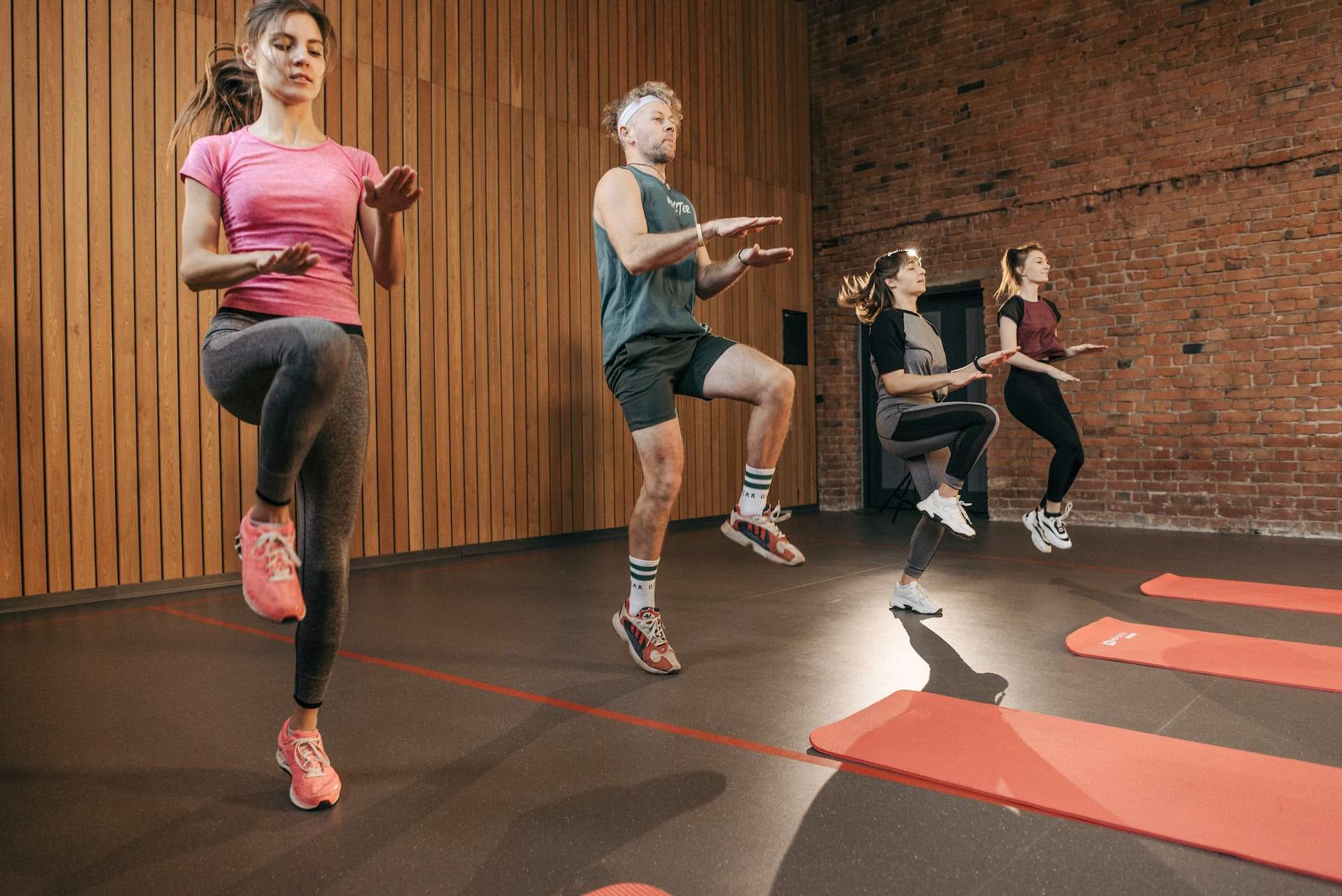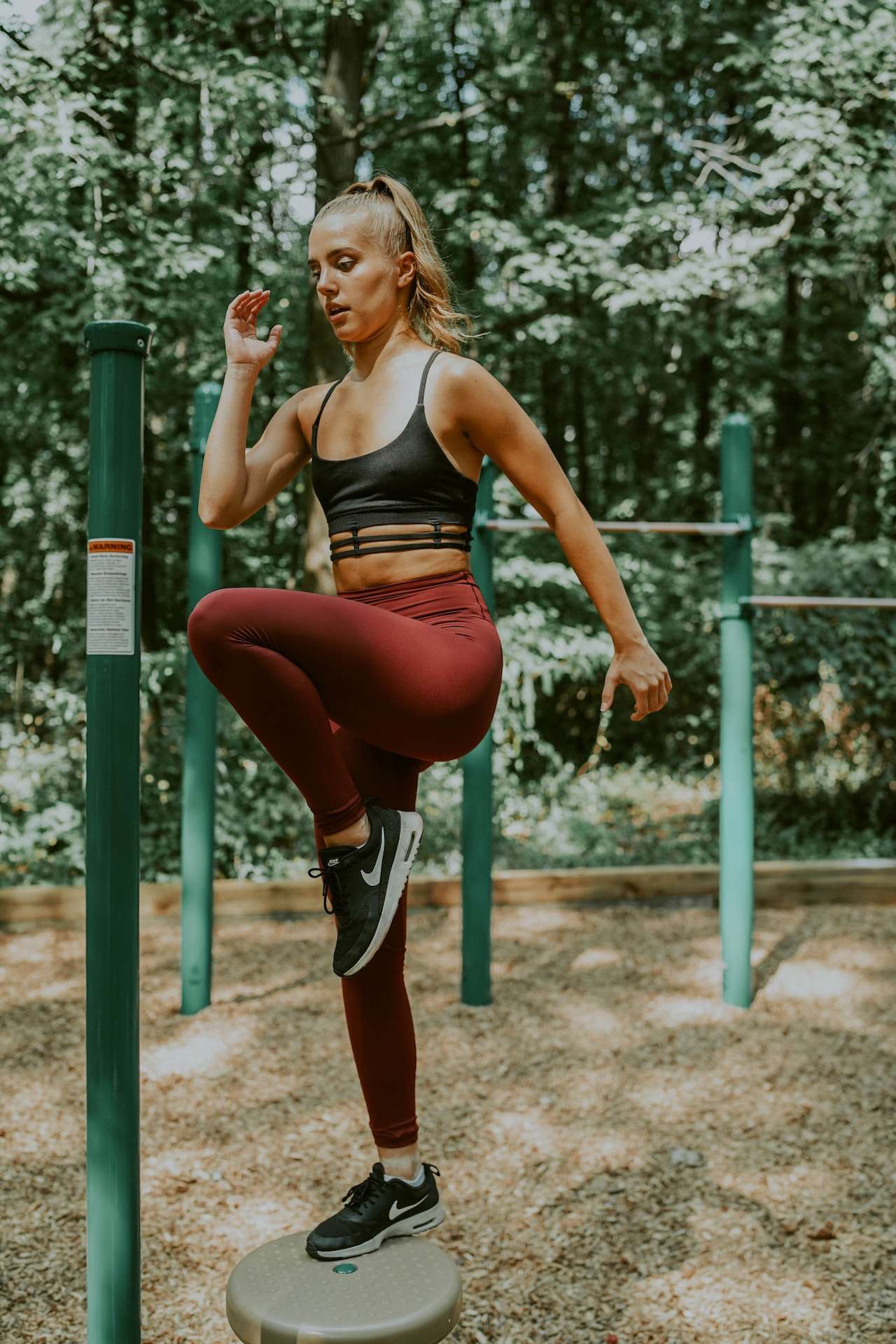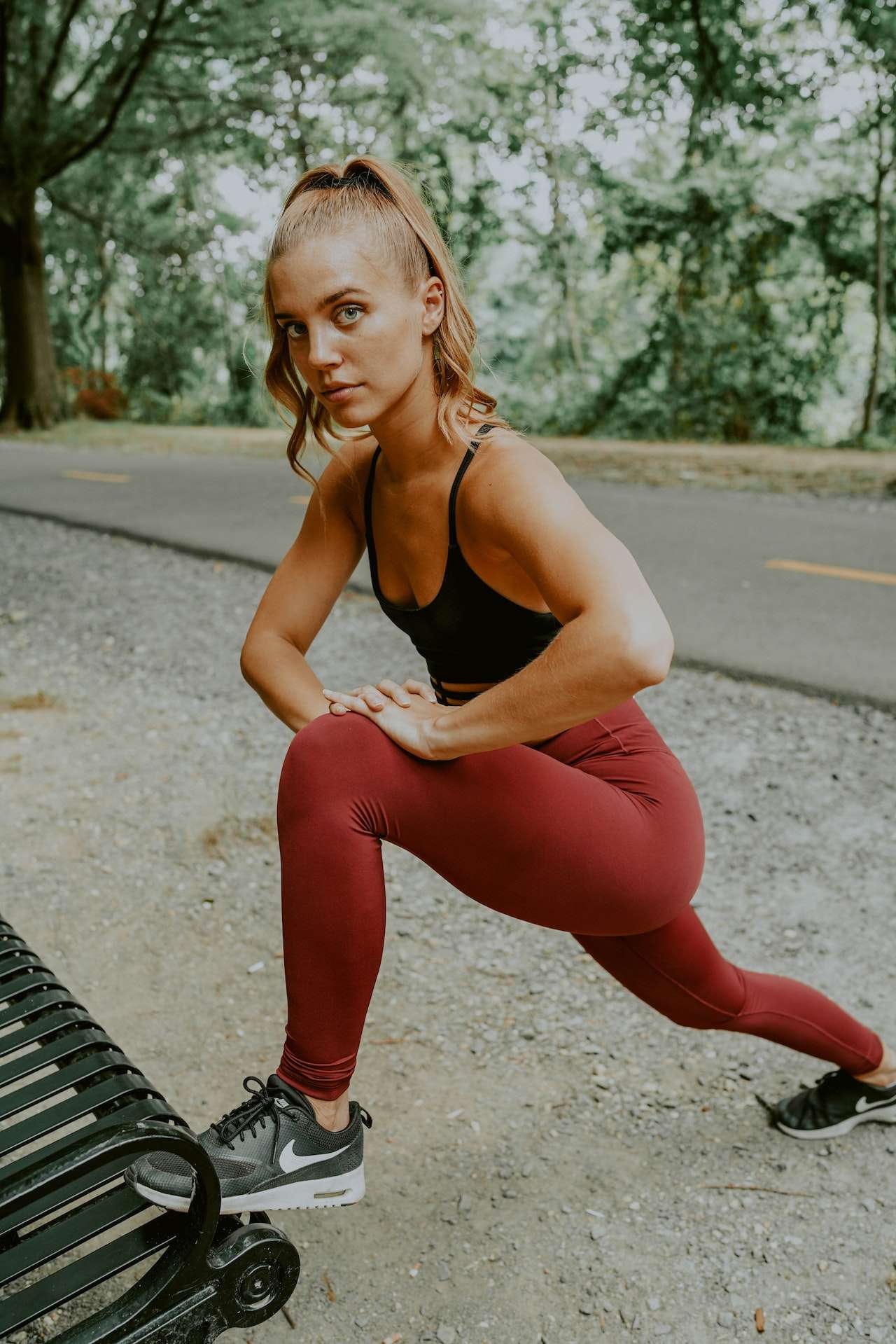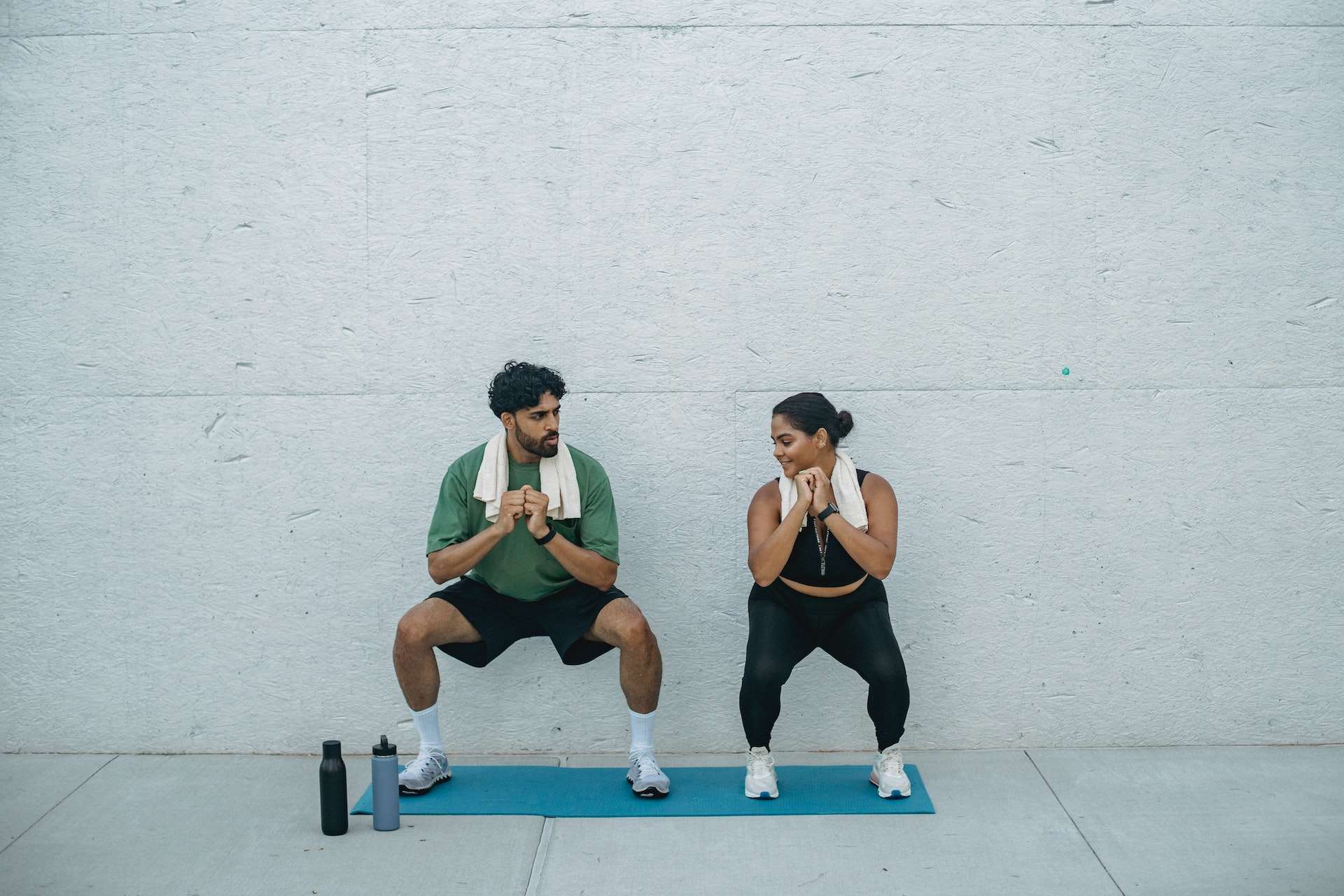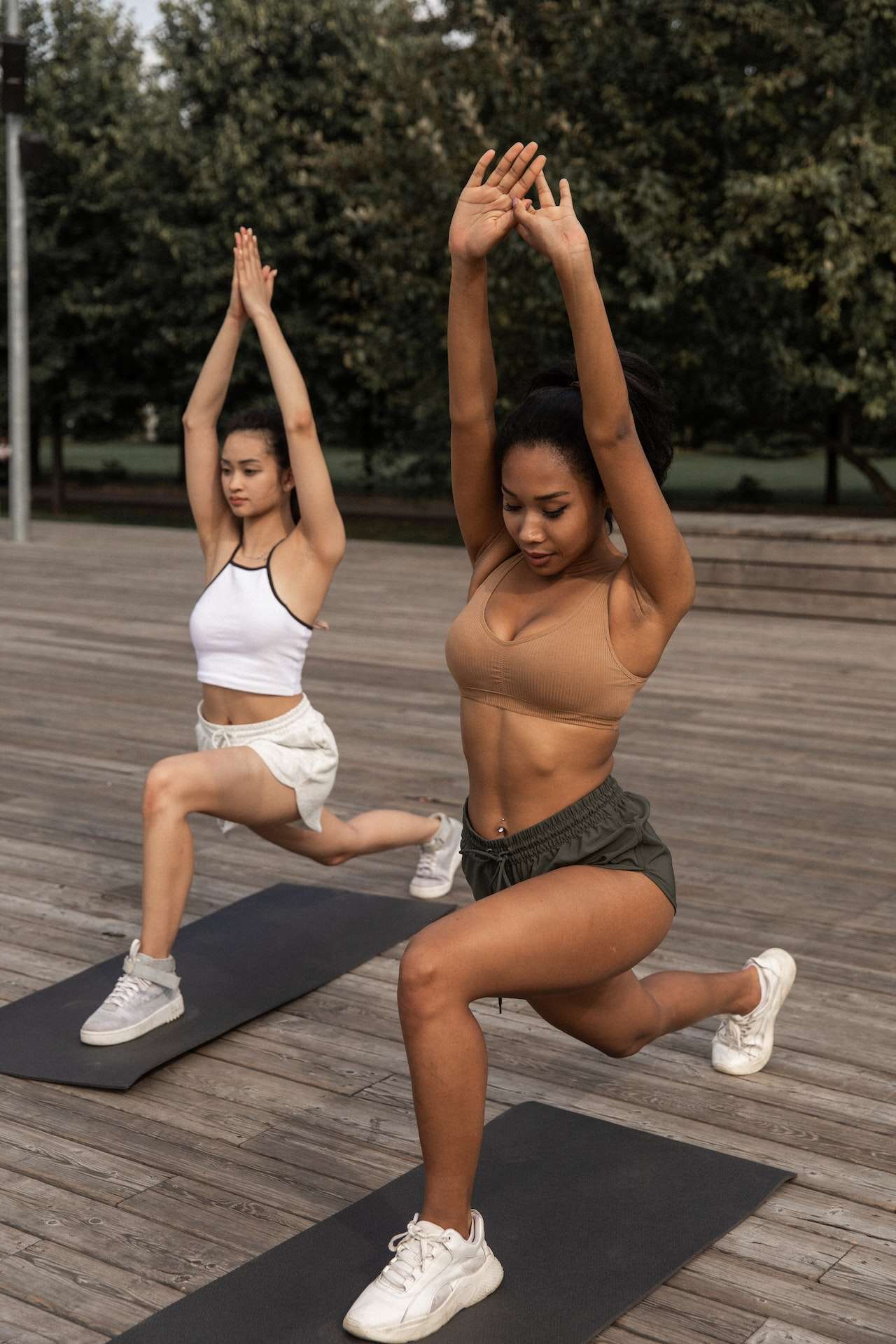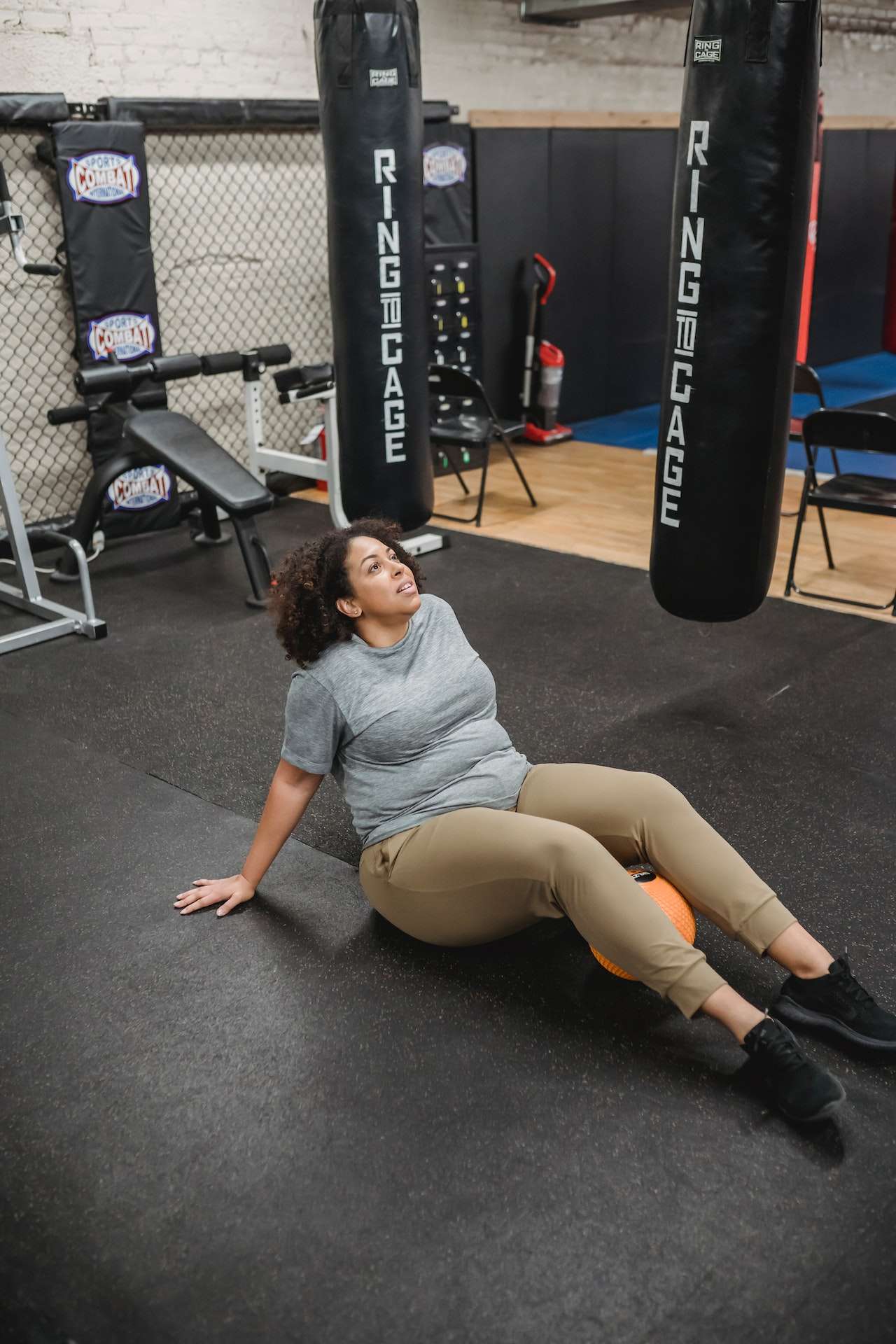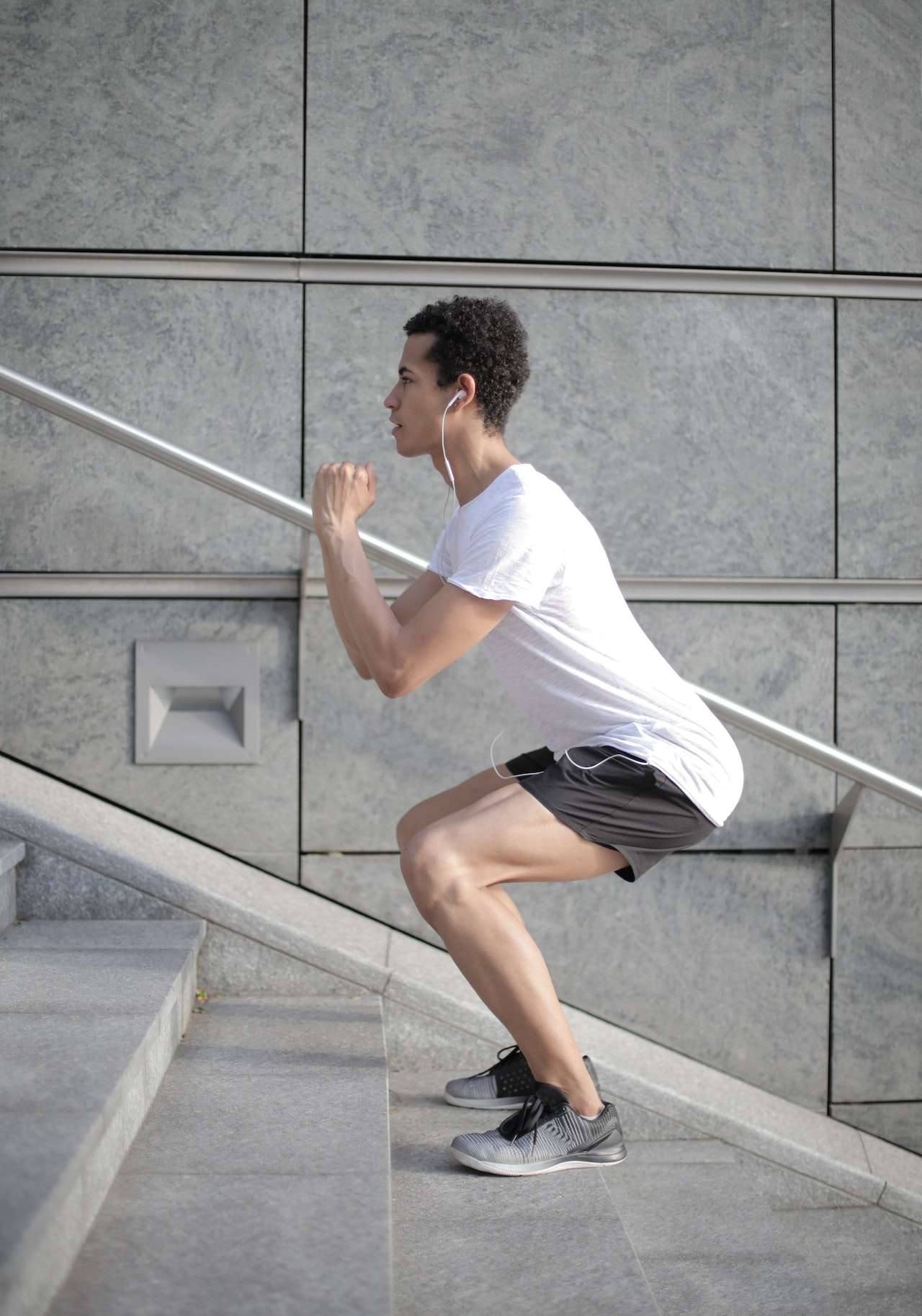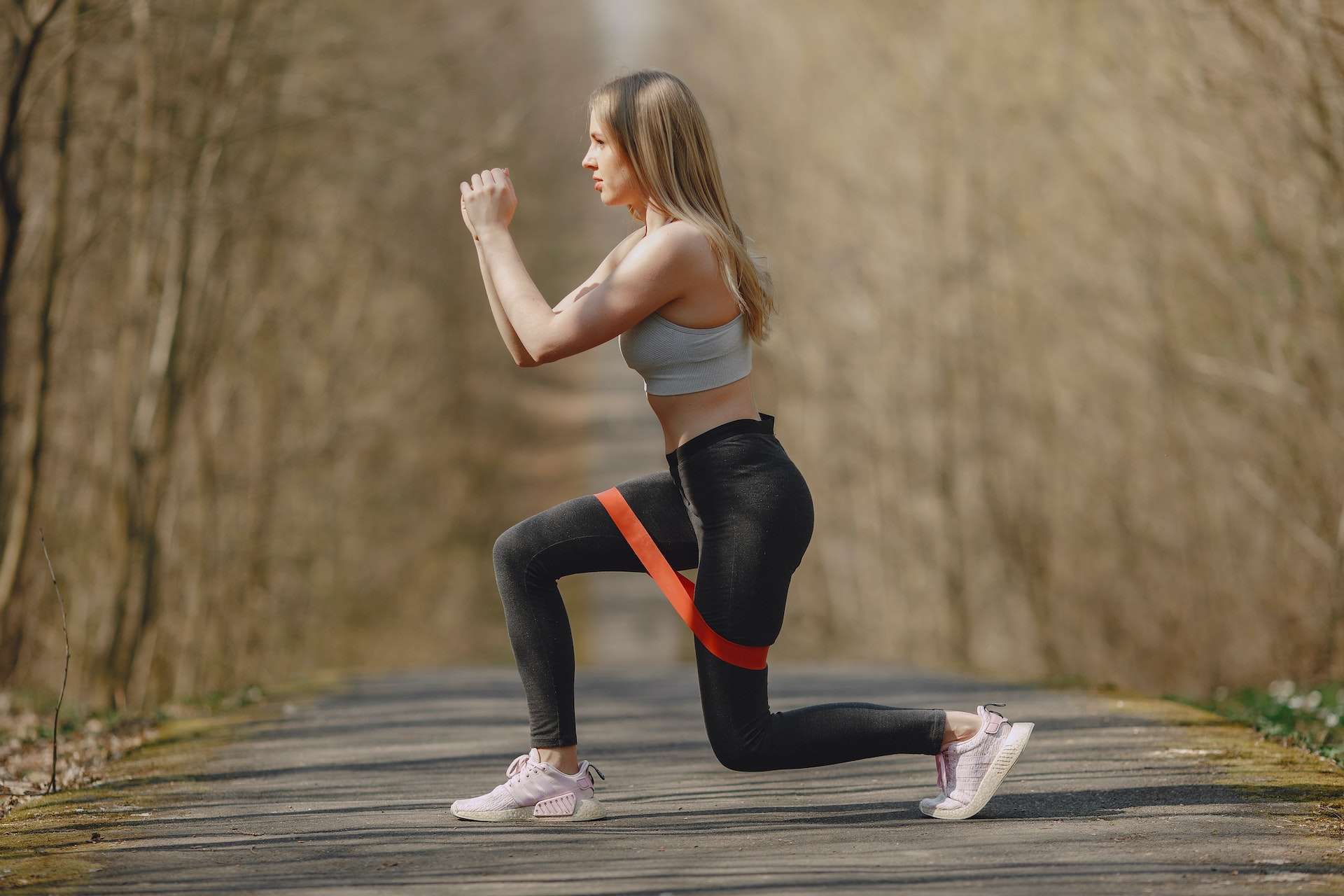|
If you’re a runner, you know the feeling of wanting to push yourself faster and further. But what if you’re experiencing knee pain? Knee pain can be a massive setback for runners, making it difficult to continue pushing your limits. But don’t worry – with the right exercises. You can help alleviate knee pain while running. In this article, I will discuss some of the best exercises that can help reduce knee pain while running. You’ll learn how these exercises can help your knees and why they are so important for runners who experience knee pain. I’ll also share my experiences with knee pain and how I’ve used these exercises to keep me running strong. Read on if you’re looking for ways to help stop knee pain while running! You’ll be surprised at how much these simple exercises can do to help reduce your discomfort and get you back on track again.
Table of Contents
show
Strengthening Exercises For The Knee JointDo you suffer from knee pain while running? It can be uncomfortable and even debilitating at times. But don’t worry; there are exercises that you can do to ease the pain. Strengthening exercises for the knee joint is a great way to tackle your knee pain when running uphill, after ACL surgery, or as a beginner. These exercises can help reduce the causes of knee pain and cure your discomfort.
We all want to know how to fix our knee pain when running—mainly if it’s caused by poor form or improper shoes. The good news is that there are exercises you can do to improve your form and avoid exacerbating your condition. These exercises include clamshells, squats, leg raises, calf raises, and lunges—all of which target different areas around the knee joint and help reduce any inflammation or stiffness associated with knee pain when running. The next step in easing your discomfort is to focus on stretching exercises for the quadriceps and hamstrings. These muscles support the knees during activities like running and walking, so keeping them flexible is essential. Stretching out these muscle groups regularly will help increase their range of motion and prevent future injuries! Stretching Exercises For The Quadriceps And HamstringsStretching exercises for the quadriceps and hamstrings help alleviate knee pain when running. They can reduce the strain on your muscles and joints, which is necessary for any runner. Stretching helps improve flexibility, leading to better performance and fewer injuries. At a minimum, runners should stretch their quadriceps and hamstrings before each run. Here are some simple stretches you can do to help prevent knee pain:
Regularly incorporating these exercises into your routine will improve your overall running performance while reducing knee pain when running downhill, long distances, and while squatting, jumping, or bending. It’s okay if you’re a beginner and your knees hurt when running – take it slow and gradually increase the intensity of the stretching as your body gets used to it. If you’re someone who experiences knee pain when running on concrete or climbing stairs, focus on strengthening exercises and stretching. These simple stretching exercises can help you reduce knee pain when running and improve overall performance – so remember to add them to your warmup routine! With enhanced flexibility from regular stretching comes more excellent knee stability during plyometric exercises designed to improve muscular strength, coordination, speed, balance, and agility – all essential for improving knee stability when running. Plyometric Exercises To Improve Knee StabilityPlyometric exercises can significantly improve knee stability if you’re struggling with knee pain when running. Plyometrics involves explosive movements that help strengthen the muscles around the knee and reduce stress on the joint. Plyometric exercises can help you build power, speed recovery time, and prevent future injuries. Choosing appropriate ones for your fitness level is essential when doing plyometric exercises for knee pain while running. Start with low-impact activities like box jumps, single-leg hops, and skipping drills. As you get more robust and more comfortable with the movements, gradually increase the intensity of the exercises by adding more challenging drills like jump squats and high-knees sprints. Strong knees are vital to preventing pain during physical activity – primarily running. Strengthening your quadriceps and hamstrings is essential for protecting your knees from injury while running or doing other activities. Plyometric exercises are an effective way to do this and can help you achieve long-term relief from knee pain. With consistent practice, these exercises can help keep your knees healthy so you can continue enjoying all kinds of activities without worrying about knee pain! Now, look at balance exercises to help prevent knee injuries when running or walking. Balance Exercises To Prevent Knee InjuriesRunning is a great way to stay in shape, but it can also lead to knee pain if you don’t take preventive measures. Balance exercises are essential to help prevent knee injuries and reduce the chances of excruciating knee pain when running. By engaging in specific balance exercises, we can end unbearable knee pain when running on hard surfaces, downhill, or even cycling! The best balance exercises for preventing knee injuries and reducing pain when running include single-leg squats, bridges, and wall squats. Single-leg squats involve standing on one foot and squatting down while keeping your chest up, and eyes focused forward.
Single-leg bridges include lying on your back with one foot resting on a bench or chair and lifting your hips off the ground. Wall squats are done by standing against a wall with feet shoulder width apart and sliding down until your knees are bent at a 90-degree angle. These exercises will strengthen the muscles around your knees, increasing their stability and reducing knee pain when running, not cycling, inside the leg, or even down the back of the calf. It’s important to note that these balance exercises should be done regularly as part of an overall program to reduce knee pain during running. So why wait? Start strengthening those legs today so you can enjoy all the running benefits without worries! Yoga Poses To Reduce Knee Pain During RunningRunning is a great way to stay physically fit and build strength in the knees, but it can take a toll on your body if not done correctly. Knee pain is one of the most common running injuries and can be challenging to recover from. Fortunately, with the proper yoga poses, you can avoid knee pain while running and keep your joints healthy. Yoga is like a dance between fluidity and structure – it helps increase flexibility while strengthening knee muscles. Certain poses benefit knee pain when running – they help reduce inflammation and strengthen the surrounding muscles. These poses include mountain pose, chair pose, child’s pose, low lunge twist, warrior I & II poses, and king dancer pose. Each poses targets critical knee areas that can become strained during running.
By incorporating these yoga poses into your routine, you can get relief from knee pain when running – whether it’s caused by overuse or cold weather conditions. You should also stretch before each run and focus on strengthening exercises that work the quads, hamstrings, and hip flexors, like clamshells or lateral band walks. These exercises help support your knees during longer runs and reduce sharp pains when going downhill or after excessive running. You can move through any terrain with dedication and mindful practice without worrying about your knees. The key is finding a balance between strength training exercises for the lower body and stretches for flexibility – this will help reduce knee pain while running so you can enjoy every mile! Cross-Training Exercises To Alleviate Knee PainExercising with knee pain can be a tricky proposition. If you’re in the zone and feeling good, pushing yourself too hard is easy, only to regret it when your knee starts throbbing. But there’s no need to despair! Cross-training exercises are an excellent way to help alleviate knee pain while running. At first glance, it may seem counterintuitive – after all, what kind of exercise will help with knee pain? The answer is surprisingly simple: by strengthening the muscles around your knees, you can take pressure off them and reduce the strain caused by running. In particular, strengthening your glutes, hamstrings, and quads will help keep your knee joints healthy when running downhill or on flat feet. Additionally, lateral leg lifts and plank holds will help you build stability in the ligaments that connect your kneecap to your thigh bone. The key is finding exercises that target all these areas without putting too much stress on your knees. Try doing some bodyweight squats or lunges before heading out for a run – this will help strengthen your legs without directly impacting your knees. You can also incorporate light weightlifting into your routine if you want more of a challenge. Make sure that your workout isn’t causing more pain than relief! And don’t forget to stretch afterward; stretching post-run is essential for preventing further damage from occurring due to muscle imbalances or impact trauma from running in cold weather or on hills. Cross-training exercises reduce knee pain while running and should be part of any runner’s training regimen. With the right combination of lower body strength work and stretching, you can keep those pesky aches and pains at bay so you can stay out there pounding the pavement! Why not give cross-training a try today? Who knows – it might just be what’s been missing from your routine all along! Now let’s explore foam rolling exercises which can also help release tension in the knee… Foam Rolling Exercises To Release Tension In The KneeFoam rolling is an effective way to reduce tension in the knee, alleviate pain and increase mobility when running. It’s a great tool for runners of all levels dealing with knee pain when running or going up and down stairs. By targeting the muscles around the knee causing discomfort, foam rolling can help release tension and tightness, allowing for an increased range of motion.
Let’s look at five foam rolling exercises that can help reduce knee pain when running:
These simple foam rolling exercises will help relieve tension in key areas around the knee and strengthen those areas that need extra attention while running – something we’ll look more closely at with eccentric exercises next! Eccentric Exercises To Strengthen The Knee TendonsIf you experience knee pain while running, finding exercises to help build strength and alleviate tension is important. Eccentric exercises are a great way to strengthen the knee tendons, helping reduce running pain. Here are four unique ways you can incorporate eccentric exercises into your routine: 1) Single Leg Squats – Start standing on one leg with your knee slightly bent. Slowly lower down without shifting weight until your thigh is parallel with the ground. Push back up and repeat for 8-12 repetitions on each leg. 2) Step Downs – Stand in front of a low step or box approximately 6 inches high. Step onto the box with one foot and then lower your other foot to the ground, ensuring you don’t touch the box with your other foot as you lower it. Step back up and repeat 8-12 times on each leg.
3) Reverse Lunges – Start standing upright and step backward with one foot. Lower yourself until both knees form 90-degree angles, and pause for two seconds before pushing back up to starting position. Repeat for 8-12 reps on each leg. 4) Hamstring Curls – Lie face down on the floor with your legs straight in front of you, toes pointing towards the ceiling. Engage the muscles around your knee joint and curl your heel towards your glutes without moving other body parts. Pause for two seconds before lowering back down and repeating 8-12 times per leg. These eccentric exercises will help build strength in the tendons around your knees, reducing pain when running – especially after pregnancy or when running downhill or fast! By incorporating these simple exercises into your pre-run warmup or post-run cooldown, you can benefit from improved performance and less knee stress overall! Aquatic Exercises To Reduce Knee Stress While RunningAre you experiencing knee pain when running? You’re not alone. Many runners struggle with this common issue, which can devastate the joy of running. Luckily, various exercises can help alleviate knee pain while running. One of these is aquatic exercises, which can reduce knee stress while running. When improving your knee health, taking the plunge into the pool can be a great way to start. Aquatic exercises support your joints by allowing you to exercise without putting too much strain on them. This is especially helpful if you have inner knee pain when running or any other injury that makes it difficult to run on land. Some great aquatic exercises for runners include:
The best part about aquatic exercises is that they don’t require any special equipment – all you need is access to a pool! So if you’re looking for an effective way to reduce knee pain while running, try these exercises and see how they work. Resistance Band Exercises To Improve Knee StrengthThere are no shortcuts when alleviating knee pain while running; hard work, dedication, and resilience are the only path to success. Resistance band exercises may provide a unique way for runners to build up their knee strength and reduce the risk of injury. This type of exercise can help runners increase their range of motion, strengthen their muscles and improve overall performance – all while reducing the amount of knee stress caused by running. Resistance bands are an inexpensive and versatile tool that can target specific areas of the body, including the knees. Exercises like lateral leg raise and squats with resistance bands can help build up the muscles on either side of your kneecap and reduce the pressure on your joints when you run.
For example, performing simple knee extensions with a resistance band can improve flexibility in your quadriceps and hamstrings, helping to alleviate any knee pain caused by running or other activities. In addition to strengthening your muscles around your knees, resistance band exercises can also target other parts of your body commonly affected by running-related injuries, such as hip flexors or IT bands. Incorporating these exercises into your training routine will give you greater control over how much strain is placed on your legs during each run. This will help you stay safe from more severe problems like a runner’s knee or patella tendinitis, which could prevent you from enjoying the benefits of running in the long term. What’s more, if you’re already suffering from debilitating knee pain when running, resistance band exercises may be just what you need to get back on track; they offer a low-impact way for runners to strengthen their muscles without putting too much pressure on their joints. With regular practice and patience, these exercises help you regain your entire range of motion in those stubborn areas where your knees hurt when running or after running is finished. Frequently Asked QuestionsHow Long Should I Do These Exercises For To See Results?At times, running can be a real pain – literally! Unfortunately, knee pain while running is too common and incredibly frustrating. As a runner, I know taking action and relieving this pain is essential to get back on track. Exercises are an excellent way to help alleviate knee pain while running. These exercises should focus on strengthening the muscles around the knee and improving flexibility. Here are some great exercises that you can incorporate into your routine: • Leg extensions – strengthen quadriceps muscle around knee joint • Hamstring curls – strengthen hamstrings by bending and extending leg • Calf raises – improve the flexibility of calf muscles • Quad sets – contract quadriceps muscle without moving the leg These simple exercises can make all the difference in reducing your knee pain while running. How long should you do these exercises to see results? Well, consistency is key here! Aim for at least two or three days per week, doing two sets of 10-15 repetitions per exercise. You’ll start seeing improvement within weeks, so don’t give up if you don’t notice a difference immediately – keep pushing yourself and stay consistent! With enough dedication and determination, you’ll return to running without pesky knee pain. Can I Do These Exercises Even If I Have A Pre-Existing Knee Injury?As an avid runner, I always seek ways to alleviate knee pain while running. Exercise can be a massive help, but the question remains: can I do these exercises even if I have a pre-existing knee injury? The answer is yes, but with caution. Talking with your doctor or physical therapist before starting any new exercise regimen is essential. They can tell you what exercises are safe for your specific condition and can guide you on how to perform them correctly. Additionally, starting slow and gradually increasing intensity is essential as your body becomes more robust. But no matter your prior level of fitness or existing knee condition, it is possible to find exercises that can help alleviate discomfort from running. For example, strengthening exercises like squats, leg extensions, and hip bridges focus on building strength around the knee joint without directly impacting it. Stretching exercises such as calf raises, and hamstring stretches also target muscles that support the knees when running—so they’re great for preventing pain during exercise. Ultimately, it’s important to remember that no two bodies are alike, and there isn’t a one-size-fits-all solution to alleviating knee pain while running. But by speaking with your healthcare provider and introducing appropriate exercises into your routine, you may relieve discomfort while still enjoying the activity you love! What Is The Best Time Of Day To Do These Exercises?It’s a common question: what is the best time of day to do exercises that can help alleviate knee pain while running? And it would be a simple answer. Wrong. There’s no one-size-fits-all answer to this – everyone’s body and lifestyle are different, so finding what works for you is essential. Ironic as it may sound, exercising at the wrong time of day could make your knee pain worse! If you’re not careful, you could have more soreness and stiffness in your joints than before. How can we figure out the optimal time to do these exercises? The key here is to listen to your body. If you’re tired during certain times of the day, there might be better times for physical activity. Instead, try stretching or light exercises earlier in the morning or evening when your energy levels are higher. Additionally, if you experience swelling or discomfort after exercising at a specific time, consider changing your routine – even if it means doing something like yoga instead of running. For some people, following an exercise routine consistently daily can work well as long as they don’t overdo it. However, if that doesn’t fit into your lifestyle or makes your pain worse, take advantage of other times when you have more energy – like weekends or days off from work – and use those moments to focus on strengthening your knees and improving flexibility. At the end of the day (no pun intended), finding out what works best for you requires trial and error. Pay attention to how your body responds after each workout and adjust accordingly until you find what works best to relieve knee pain while running without causing further harm. Are There Additional Steps I Should Take To Prevent Knee Injuries While Running?When running, taking the proper steps to prevent knee injuries is essential. After all, knee pain can be a real issue that hinders your progress and makes it difficult to stay motivated. Fortunately, you can take a few extra measures to keep your knees safe while running. First of all, make sure you have the proper gear. This means investing in quality running shoes that fit well and provide enough support for your feet and legs. Additionally, wearing compression socks or sleeves can help reduce the impact on your knee joints when running. It’s also important to listen to your body and adjust your intensity accordingly. If you notice any pain or discomfort in your knees while running, you should stop immediately and rest before continuing. Also, try mixing up your routine by alternating between different types of terrain and speeds so as not to overwork any one area of your body. Finally, remember to stretch before and after each run to loosen up tight muscles that may be causing strain on the knee joints. By taking these simple steps and paying attention to how you feel while running, you’ll be able to protect yourself from potential knee injuries in the future. With some preparation and care, you can ensure every run is safe and enjoyable! How Often Should I Be Doing These Exercises?When it comes to preventing knee injuries while running, exercises can be a great way to help you stay healthy. But how often should these exercises be done to alleviate knee pain appropriately? Doing specific exercises regularly to keep those pesky knee injuries at bay while running would be best. Doing the same exercises daily isn’t necessary or recommended; instead, try switching up your routine depending on your body’s needs. For instance, if your knees are sore one day, strengthen the muscles around them with squats and lunges. On another day, focus on flexibility with yoga poses like downward dog and pigeon pose. Finding a balance between strength-building and stretching that works for you is essential. Aim for at least three days a week of specific exercises related to running and knee pain prevention — but don’t forget to take rest days too! Listening to your body is key here; if you’re feeling particularly sore or tired one day, permit yourself to take a break from exercise. Conclusion:The last thing you want is to be sidelined with a painful knee injury. Taking proactive steps to prevent and alleviate knee pain while running is essential for any runner. Exercises targeting your knees’ muscles, tendons, and ligaments can help protect them from injury and keep you performing at your peak. Committing to a consistent routine of these exercises is essential to see results. Aim for doing them thrice a week, preferably earlier when your body is fresh. Although some exercises may be challenging if you have a knee injury, don’t forget the adage of “no pain, no gain.” With a doctor’s advice and proper form, it’s possible to work through most exercises safely without exacerbating your condition. Finally, taking additional steps such as stretching before and after runs and using proper footwear when running on rough terrain or inclines is essential to protect your knees from further harm. So take the time to build that knee strength—your future self will thank you! After all, as they say: an ounce of prevention is worth a pound of cure. |
